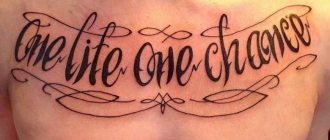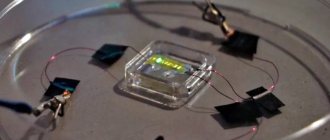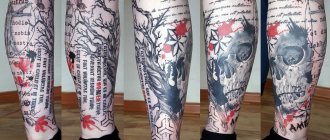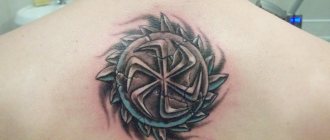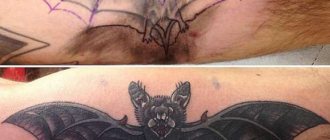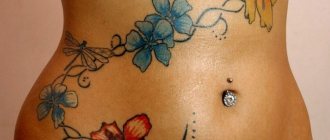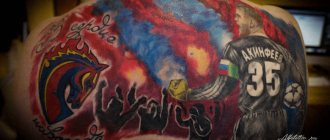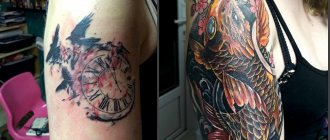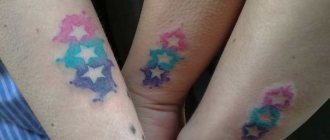
A tattoo you can pay with at the supermarket? A tattoo that monitors your health? It may soon become as commonplace as contactless payment cards or fitness bracelets.
Under the general term "electronic tattoo", "e-tattoo" or "smart tattoo" there are several developments related to the idea of creating electronic subcutaneous implants or stickers with useful functionality.
One tattoo - dozens of functions
In 2015, Chaotic Moon, an American company, offered the world technology for printing temporary digital tattoos, Tech Tats, using electrically conductive pigment. The development was positioned as a fitness tracker, a wallet and a GPS beacon in one bottle. The working stuffing of such a tattoo is a microcontroller, the color and shape are created by paint-conductor layers, and the data can be read remotely using wireless communication. According to the creators, the technology makes it possible to create digital tattoos for the search for missing people, treatment of chronic diseases, rehabilitation after injuries.
Electronic tattoo and smartphone control
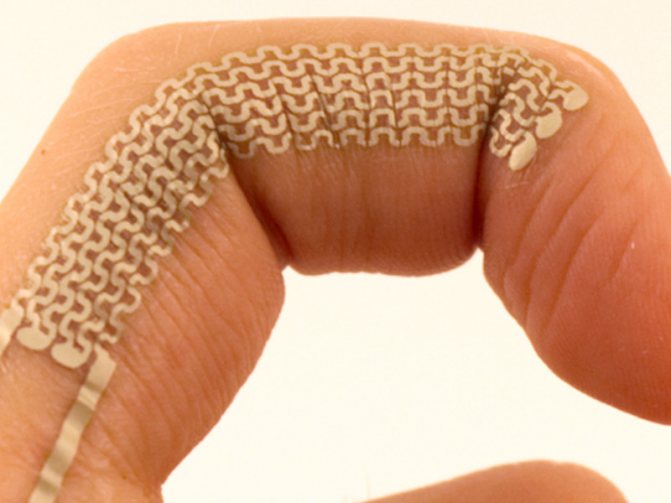

Electronic tattooing has already been announced for use in tomorrow's gadgets, such as 5G smartphones, medicine and robotics. But developers are not stopping there. The prototype touchscreen, indicators and smartphone controls on your skin area, is no longer such a fantasy.
Ultra-thin electronic temporary tattoos are now capable of transforming an area of your body into touch buttons, allowing you to control your own wrinkles and freckles, for example.
People, for the most part, remember the location of their own moles and birthmarks, making them ideal locations for sensors, says Martin Wiegel of Saarland University in Saarbrücken, Germany, who is leading the study. You could simply press a freckle to answer a phone call, or swipe your finger across your knuckles to change the volume of music.
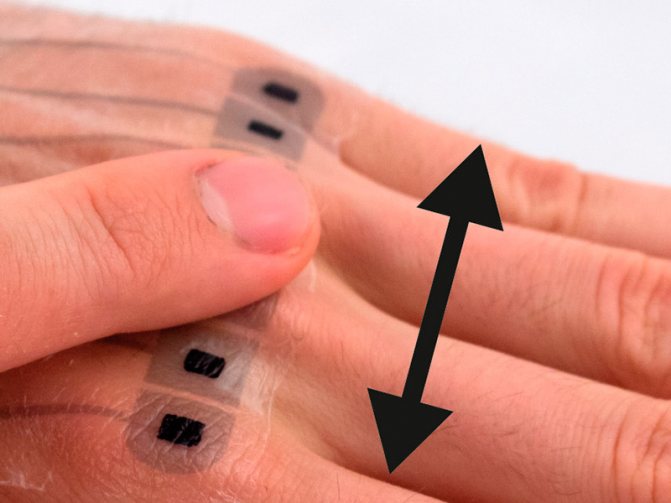

Wiegel and his university colleagues used electronic ink to print wires and electrodes that are smaller than a human hair onto special paper for temporary tattoos. They are transferred to the skin with water and can be used for several days until they are completely frayed.
"We use the elastic properties of the skin, including curves and stretches," says team member Jurgen Staml. For example, you can adjust the volume of your smartphone by moving one finger over a tattoo placed along the other finger. The tattoo on the curve of your finger can become a volume control, as well as a play and stop button. Similarly, knuckle tattoos can work as four separate buttons when the hand is clenched into a fist, or work as one long slider when the fingers are straightened.
Another type of electroluminescent tattoo, glows when an electric current passes through the tattoo. In this way, you can get tattoos that look like icons of your favorite smartphone apps that light up when you get notifications on those apps.
To test the tattoos, the group connected them to a computer, but in the future they will link to Android smartphones. "Now we've tested the technical capabilities of electronic tattoos, the next step is to look at implementation on a practical level," says Vigil.
There is only one practical obstacle to widespread implementation, the microcontrollers used to transmit signals from the tattoo to a computer or smartphone. For their research, Wiegel's team used copper tape to connect the tattoo to small Arduino microcontrollers, which were attached to the arm via a bracelet, but bulky boards would be awkward to wear on other parts of the body.
Despite the limitations, Harrison believes that electronic tattoos are the next logical step in the development of wearable technology.
It will be some 10 years before we see sensor tattoos in widespread use, Harrison says, but he predicts a future in which control through electronic tattoos will become the new norm.
"There will be digital tattoo parlors that you can walk into in 2050 and walk out five minutes later with an iPhone 22 on your forearm."
Video from the developers:
Rate this article
Fancy electronic tattoos
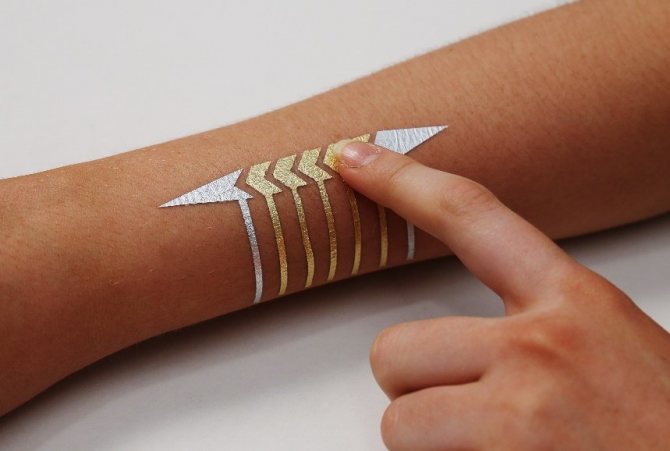

Electronics on the skin can serve more than just medical purposes, they can simply make life more convenient and fun. The University of Massachusetts created DuoSkin tattoos in 2021 that looked like gold and silver transferable pictures on the body, which were popular at the time. At the same time, the jewelry was equipped with NFC technology for contactless payment and other useful features. For example, they could be used to change the volume of the music in the phone.
Tattoos with electrodes
In addition, among the smart tattoos is the so-called HeartMark tattoo, which is a heart-shaped touch screen display that turns a birthmark into the phone number of a loved one. Touching your birthmark instantly dials your significant other.
Another smart tattoo option goes by the name CaptureMark. This tattoo looks like a balloon for capturing virtual objects in augmented reality games ("Pokemon," for example).
The future of smart tattoos
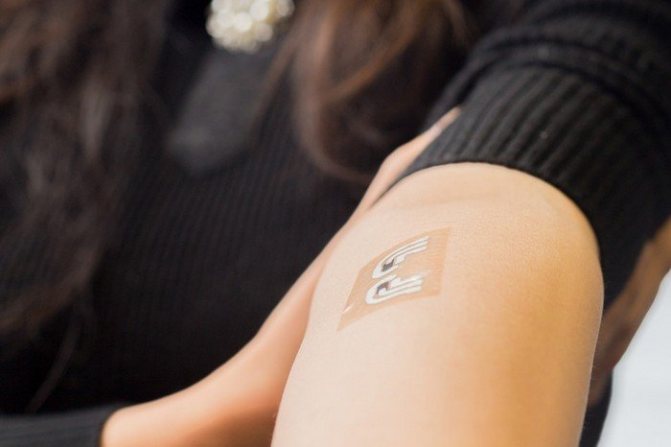

Now tattoos with electrodes and other inventions of scientists seem more like a plot for a movie than a vital necessity. Indeed, why pay with a tattoo when you have a smartphone? But just recently we reasoned this way: why pay with a smartphone when you have a bank card? Technology is coming into our lives, and we are quickly getting used to a new level of comfort. Perhaps very soon the tattoo artist will offer a choice of useful functions in addition to the sketch of the future drawing on the skin: paying for purchases, hailing a cab or listening to music. But as long as conventional tattoos have no such features, we are left to enjoy the main function of the drawings on the skin - aesthetic.
Tattoos of the future
The design of tattoos also depends on the function you want to give it. For example, you can create a special tattoo for your index finger to control the player on your smartphone. By touching or stroking the touch elements of the display, you can adjust the sound or scroll through tunes.
There are also electroluminescent tattoos that glow when an electric current runs through them. Such tattoos are created in the form of social media icons. As soon as you receive a new message, they light up.
Biohacking as an aesthetic
American beauty mouthpiece Allure magazine recently wrote about the Pittsburgh-based biohacking startup Grindhouse Wetware. Scientists there are experimenting with self-energizing illuminated implants. Co-founder Tim Cannon has a small Circadia monitor implanted in his forearm. The device can transmit Tim's body temperature via Bluetooth to Android. In case of a temperature spike, the phone itself will be able to call an ambulance to its owner. The monitor, when connected to Bluetooth, lights up slightly with a green LED light through the skin, which looks very futuristic. This inspired the Circadia developers to give humans the ability to glow, like fireflies and some animals - a phenomenon called bioluminescence in nature. It is based on chemical processes in which released energy is released in the form of light.
The Northstar is a device that is sewn under the arm and glows a red star. No practical use, just aesthetics. "It's funny how people have turned their minds to such technological possibilities. As if playing with shades of lipstick and shadows weren't enough for us, we want to glow in all the colors of the rainbow," says Nina Jablonski, professor of anthropology at the University of Pennsylvania. - We are absolutely visual animals, the more exotic something looks, the better it is for our eyes. I believe in a future in which we can do a million things with one body movement while glowing and shimmering. Unbelievable!"
View on Instagram
What tattoos will always be relevant?
Tattoos done by a professional artist are always relevant. If you know what I mean.
- Where is the most painful to tattoo and where is the least painful?
Everyone has an individual pain threshold. Men and women tolerate pain in the same places differently. In my experience, it is easier for girls to tolerate pain on their backs. Places like ribs, abdomen, hands, and head are more painful than others. Clients tolerate pain on the shoulder or forearm the most easily.
- How long does the application process take?
There are no universal statistics here. It all depends on the size and detail of the tattoo. Small jobs are done within one session (up to three hours). On the sleeve or back, it understandably takes many sessions.
How do you take care of your new lifelong drawing? Can I go in the shower? How about a bath?
Any smart master after the session will explain to the client the main points of tattoo care or give a memo on smart healing.
The first days it is necessary to wash the tattoo with warm water and soap in the morning and in the evening. Blot with a napkin and, letting it dry, apply the cream "Bepanten" or D-Panthenol, or special tattoo-cream.
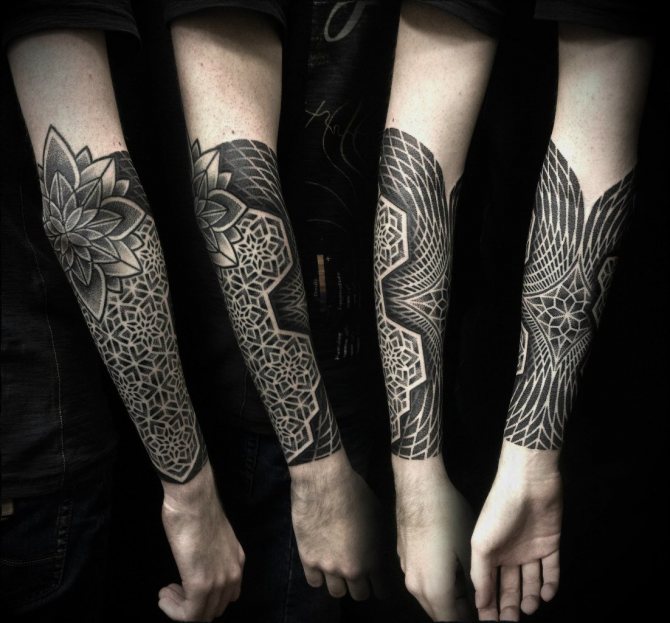

If we talk about the restrictions in brief, you can not take a bath (steamed skin), go with a fresh tattoo in the pool, sauna, swim in bodies of water, tan. In no case can not rub the skin with a sponge, exfoliate, scratch.
Until complete healing, it is necessary to moisturize the skin with creams containing Panthenol.
If you want your tattoo to please you for many years, in summer protect it with a sunscreen with the factor spf+50.
You would think, what's so special about a set of numbers? Well, it's that different digital combinations can play a variety of roles, from a commemorative marker to a symbol of good luck. And if you delve into the science of numerology, you can learn a lot about each number.
All the tattoos with numbers can be divided into several categories:
1. date tattoos. Own birthday, children's birthdays, dating, weddings, school graduation and other memorable and important days - what only does not meet the adherents of digital tattoos.
2. Single digits. In cases where only one digit is applied, it can mean only a part of a certain date, for example, only the month or the number. In some cases, a single digit acts as a certain symbol for good luck.
3. set of digits. If an illogical set of numbers is incomprehensible to others, it means that it has a very important, and often encrypted, meaning for the owner of such a tattoo. Such "random" sets of numbers can hide anything from a phone number to a safe password.
Two varieties of numbers are used as tattoos - Roman and Arabic. The meaning of the numbers does not change from the variant of writing. Here, everything depends on the digital preferences of the client of the tattoo salon.
In a separate category can be allocated figures that bring luck, good luck in love or monetary success. Many people have their own lucky number, and they believe that if they put it as a tattoo, luck will always accompany them. Some believe in magic number tattoos. For example, the number 1 will always help to stay first and be a leader, and the number 3 or 7 will be a good luck charm.
In addition to lucky numbers, also unlucky numbers are called - three sixes, the number 999 or the number 13, which everybody knows, but some daredevils, on the contrary, thus challenge the fate, trying to prove that these combinations can not only harm, but also help in many situations.
To all those who have a desire to apply a digital tattoo, it is possible to heed the recommendations of numerologists and to impose that number, which best represents the qualities desired by the client.
The 1 is a symbol of success for businessmen and business personalities. It is believed that the number 1 will definitely help to get a promotion at work.
2 is a sign of communication, the ability to establish contacts and reach an understanding with colleagues, friends and relatives.
3 - this number is responsible for creativity and creativity.
4 - stability and confidence are the qualities inherent in the four.
5 is a symbol of impermanence. It is believed that the five is well suited to unconventional personalities.
6 - love, mutual understanding and family ties. Six is recommended for those looking for a soul mate.
7 - a symbol of luck.
8 - this tattoo is considered very "money". Want to improve your financial situation? Apply tattoo 8.
9 - attracts good luck in your career, family, and romantic relationships.
0 - numerologists give it special meaning. Zero can both create and destroy, so you should be careful when combining it with other numbers.
Number tattoos are always popular. Their main feature is that even their identical combinations in different people have their own unique meaning.
No subcutaneous intervention
Not ready for surgery? Chris Harrison, a professor of computer science at Carnegie Mellon University's Human-Computer Interaction Institute, has been working since 2009 on the OmniTouch device, also with the help of Microsoft - the device is worn on the forearm and projects data from your phone onto the palm of your hand. You no longer need to press on the phone's screen - the ultra-sensitive camera allows you to recognize the touch of an image in the palm of your hand. The next step is to take selfies with the palm camera. "The creation of smartphones inspired all these inventions," Harrison says. - "Imagine how many more ideas we have for how to engage your body in this celebration of technology.
Sign up and get one step closer to the professionals of the fashion world.
Subcutaneous microchips
Another gadget from the world of biohacking is subcutaneous microchips. How are they used? The rice-like implant is implanted in the skin fold between the thumb and forefinger, which is painful in a way similar to piercing. After implantation, there may be swelling and even bruising around the chip, which goes away after a few days. It takes about 2 to 4 weeks to heal, and there may still be a temporary itching or squeezing sensation for two years. Such a chip can not only monitor your health, but also collect a complete picture of various vital signs in the future.
As explained in the leading tech publication Ars Technica, microchip implants are small cylinders of lead-free borosilicate glass or biologically neutral sodium lime-based Schott 8625 glass containing a microchip, biologically neutral epoxy resin and a copper coil antenna. Microarrays are divided into three frequency groups: low-frequency, high-frequency, and ultrahigh-frequency. Those suitable for implantation usually belong to the first or second group. They are inert until a reader, a source of electromagnetic field, is brought near them.
View on Instagram
View on Instagram
The chips are also divided into RFID (radio frequency identification), which can, for example, open doors when you put your hand to the scanner, and high-frequency NFC (near-field communication) chips. They are similar to what we already use in credit cards, contactless payment systems in cell phones or implants in animals. NFC chips allow any information that can be recognized by an NFC device to be written on them. For example, instead of scanning your discount card with your phone, you can simply put your hand to the reader.
Last summer, the Three Square Market company in the U.S. experiment to install the "smart pill" was attended by 50 employees - all voluntarily. The price of one chip was $300, which, of course, was paid for by the company itself. The chips replace a pass to work, a credit card or a business card.

